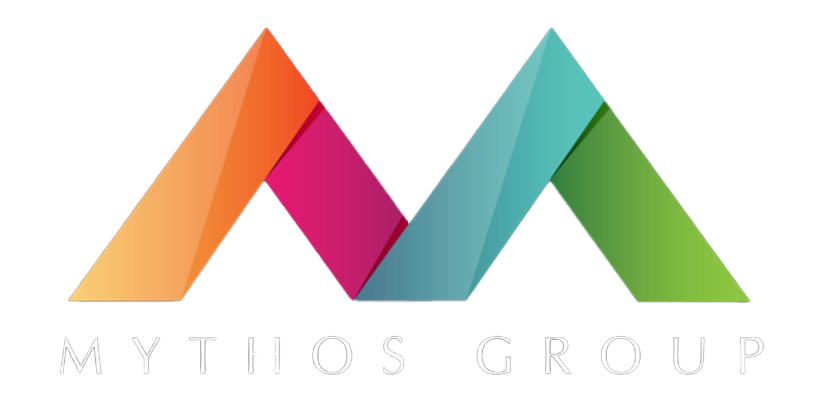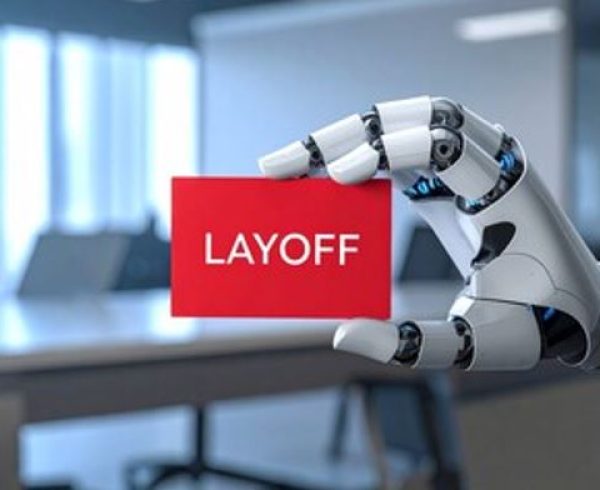The transformative power of artificial intelligence is no longer a distant possibility — it’s here, reshaping industries, disrupting traditional business models, and creating unprecedented opportunities for growth. However, for executives tasked with leading an AI-driven transformation, the journey requires more than just technology adoption — it demands a deliberate, strategic approach that integrates AI seamlessly with your organization’s broader vision and goals. This process begins with asking the right questions. The inquiries presented here are not merely technical considerations; they are essential to shaping a comprehensive AI strategy that delivers measurable impact, drives innovation, and positions your organization to thrive in an increasingly competitive landscape. By rigorously addressing these questions, you will ensure that AI becomes not only a tool but a powerful catalyst for sustained business success and market leadership.
1. What Strategic Business Outcomes Will AI Enable For Your Organization?
As you embark on AI transformation, your first imperative is to align AI initiatives with your business vision and strategic goals. AI should not be seen as an isolated technological project but as a transformative enabler of business outcomes.
- How will AI drive high-impact outcomes like cost reduction, revenue growth, and the enhancement of customer experiences? How will it redefine operational efficiency in the short and long term?
- How can AI unlock new revenue streams, enable innovative business models, or accelerate market penetration in emerging industries?
- In what ways can AI be a force for differentiation, reshaping your competitive advantage and helping you adapt to fast-evolving industry trends?
Example: Tesla is a prime example of an organization whose AI-driven approach has redefined an entire industry. With its Autopilot and Full Self-Driving (FSD) systems, Tesla is not only innovating in electric vehicles but disrupting the transportation sector. Their AI-powered vehicles are driving revenue growth while pushing the boundaries of what’s possible in autonomous driving.
2. How Will You Measure Success And ROI In The Context Of AI?
AI implementation isn’t successful unless you can measure its impact on the business and demonstrate quantifiable returns. It’s vital to establish clear KPIs and benchmarks from the outset to guide progress and adjust as needed.
- What key performance indicators (KPIs) will you use to measure success? Will it be through cost savings, productivity gains, customer retention, or other strategic metrics like NPS (Net Promoter Score)?
- How will you ensure that AI investments provide a clear ROI, aligning technology efforts with business value creation over the short term and long term?
- What mechanisms will you put in place to continuously track AI-driven performance and evolve your models for increased efficiency and optimized outcomes?
Example: Netflix is a stellar example of measuring AI success through customer experience. By leveraging AI to power personalized content recommendations, Netflix has increased user engagement and customer retention, ultimately driving revenue growth. They report that 80% of the content people watch comes from these AI-driven recommendations.
3. What Data Infrastructure And Systems Integration Are Required?
AI’s true potential is realized when it’s built upon a solid foundation of data. Without real-time, structured, and accessible data, AI can’t function at its best. This question helps you evaluate whether your data systems are ready to support the scale and complexity of AI.
- Do you have the right data infrastructure in place, such as real-time data pipelines, cloud storage solutions, and integrated data platforms?
- How will you ensure that AI systems can seamlessly integrate with your existing platforms (e.g., CRM, ERP, and IoT systems) to create a unified data ecosystem?
- How will you enforce data quality standards, privacy compliance, and security protocols to ensure that AI decisions are based on accurate, transparent, and reliable data?
Example: General Electric’s Predix platform, which integrates AI with industrial data, is a game-changing example. GE developed a robust data infrastructure to connect various sources of operational data, powering predictive maintenance tools and delivering $1 billion in annual cost savings to their customers.
4. Which Processes And Domains Are Ready for Full AI Autonomy?
AI excels in automating well-defined, structured workflows. Understanding which processes to fully automate, versus those that need human oversight, is crucial for success. This will drive efficiencies and ensure the best use of AI within your organization.
- Which operational processes (e.g., customer service, inventory management, or claims processing) are ripe for automation and can be handed off to AI systems with minimal risk?
- Which areas still require a human touch for tasks like complex decision-making, creative problem-solving, or empathy-driven customer interactions?
- How can you ensure a balanced approach where AI systems work in tandem with human expertise to deliver optimal outcomes?
Example: JPMorgan Chase’s COiN platform automates the review of legal documents, significantly reducing the time spent on contract analysis. This AI-powered automation has saved the bank 360,000 hours of legal work annually. However, complex legal decisions and high-stakes contract negotiations are still handled by legal experts.
5. How Will You Manage Risk, Security, And Compliance In AI Deployment?
With AI comes a heightened level of responsibility. Implementing safeguards to ensure ethics, security, and regulatory compliance is non-negotiable.
- How will you build transparent, explainable AI systems that ensure decisions made by AI can be understood, audited, and challenged?
- What security protocols will you put in place to prevent data breaches, model manipulation, and other risks associated with AI?
- How will you navigate complex regulatory landscapes, such as GDPR or CCPA, to ensure that your AI systems meet both industry standards and legal requirements?
Example: Microsoft is a leader in AI governance and security. Its AI Principles focus on fairness, accountability, transparency, and privacy. Microsoft also advocates for human-in-the-loop systems to mitigate risks, ensuring that ethical considerations are embedded in the AI development process.
6. What Organizational Capabilities And Talent Do You Need To Build Or Acquire?
AI is a cross-functional endeavor requiring a diverse mix of skills, from data scientists to change management leaders. Assessing talent gaps and strategically hiring or upskilling your workforce is key.
- What expertise is required to build, implement, and scale AI, including AI/ML engineers, data scientists, and AI product managers?
- How will you reskill your existing workforce, enabling them to work alongside AI systems while enhancing their ability to make data-driven decisions?
- Where will you find external partners or consultants to plug gaps in your capabilities, especially for complex AI areas such as natural language processing or predictive analytics?
Example: Google has created a world-class AI-driven organization by investing heavily in talent acquisition. By continuously hiring top-tier AI and machine learning experts, Google has advanced its AI capabilities, powering innovations like Google Assistant, Google Translate, and self-driving cars.
7. How Will You Ensure Cultural Buy-In And Drive Effective Change Management?
The success of AI isn’t only about technology—it’s about aligning people, processes, and mindsets. Effective change management and building a supportive culture are essential for widespread adoption.
- How will you communicate the value of AI to all stakeholders and demonstrate how it will enhance—not replace—their roles?
- What training programs and support structures will you put in place to ensure employees understand AI’s potential and are equipped to leverage it?
- How will you address concerns and resistance to change, creating a culture of AI adoption and continuous learning?
Example: Siemens has successfully embraced AI by fostering a culture of innovation and empowering employees through training programs. Their AI-enhanced smart factories have increased efficiency by 20%, showcasing how AI and people can work together to transform traditional industries.
8. What Ethical Considerations Will Guide AI Development And Deployment?
AI’s reach extends to many aspects of society, making it essential to build it on a foundation of ethics, responsibility, and accountability.
- How will you ensure AI is developed and deployed fairly, ensuring that the models don’t perpetuate bias or discrimination?
- What steps will you take to ensure that your AI systems respect privacy, protect sensitive data, and comply with global data privacy regulations?
- How will you monitor AI decision-making to ensure it aligns with your organizational values and reflects the interests of diverse stakeholders?
Example: IBM Watson upholds strict ethical guidelines for its AI projects. Its commitment to fairness and transparency is evident in initiatives like AI Fairness 360, a toolkit designed to detect and mitigate bias in machine learning models, ensuring responsible use of AI.
9. Which Partners And Vendors Should You Collaborate With To Accelerate AI Implementation?
AI is a highly specialized field, and forming strategic partnerships will help you accelerate implementation, ensure scalability, and enhance innovation.
- Which AI platforms or vendors—such as Google Cloud AI, Amazon Web Services, or Microsoft Azure—offer the flexibility, scalability, and security your organization needs?
- Should you build in-house capabilities or partner with external experts to leverage specialized knowledge and technology stacks?
- What partnership criteria will you apply, focusing on factors like security certifications, integration ease, and future-proofing technologies?
Example: Spotify successfully collaborated with Google Cloud AI to enhance its personalized recommendation engine, which has been a cornerstone of its success. By leveraging Google’s big data and machine learning infrastructure, Spotify has gained a competitive edge in the crowded streaming market.
10. What Is Your Roadmap for Continuous Improvement and Scaling AI?
AI is a journey, not a destination. To achieve sustained impact, you must have a roadmap for iteration, optimization, and scaling AI across the organization.
- How will you pilot AI projects, gather feedback, and iterate on the models to ensure continuous improvement?
- What steps will you take to scale AI from small, isolated projects to enterprise-wide deployments that impact all facets of your business?
- How will you evaluate underperforming models and pivot resources to more successful initiatives while scaling your AI center of excellence?
Example: Amazon’s evolution from a simple e-commerce platform to a global AI leader demonstrates the power of continuous innovation. By consistently scaling AI from Amazon Web Services (AWS) to Alexa, Amazon has maintained its position as an AI powerhouse that continually pushes the envelope in customer-centric services.
Ready To Transform Your Business?
The journey toward AI transformation is one of profound change and boundless potential, and its success hinges on thoughtful planning, leadership, and a relentless focus on aligning AI with your strategic vision. The questions outlined above provide the blueprint for crafting an AI strategy that is not only efficient but visionary. It’s time to move beyond theoretical discussions and take actionable steps. Rally your leadership team, dive deeply into these questions, and begin building the foundation for an AI-powered future. The future is unfolding now, and the decisions you make today will define your organization’s success in this new era. Don’t wait for change to come—be the catalyst. Shape your AI strategy now, and lead your company into the future with confidence, agility, and purpose.
Contact our team at Mythos Group to discover how our consultants can help you achieve your goals. With a tailored approach and expert guidance, we’re here to support your success.







